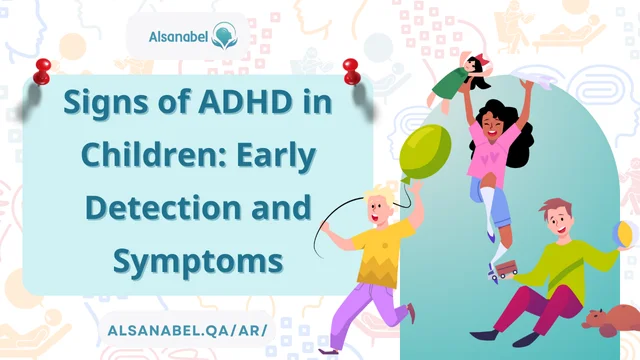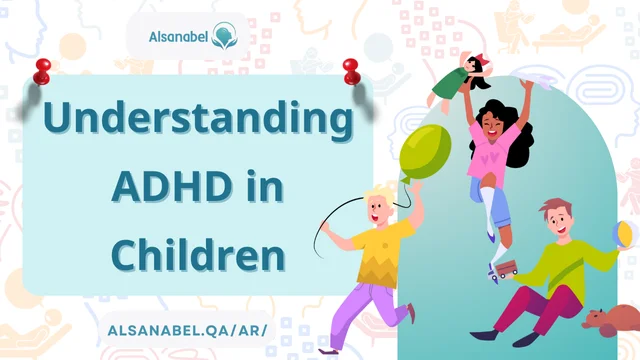
Attention Deficit Hyperactivity Disorder (ADHD) is one of the most common neurodevelopmental disorders affecting children. Recognizing the signs of ADHD in children at an early age can make a significant difference in their academic, social, and emotional development. Early detection allows for timely intervention, which helps minimize challenges and fosters their strengths.
This article explores the symptoms in kids, focusing on how to distinguish between typical childhood behaviors and early ADHD signs. By understanding the traits of ADHD in preschoolers and beyond, parents and educators can take the necessary steps to support a child’s growth and success.
Understanding ADHD in Children
ADHD is characterized by persistent patterns of inattention, hyperactivity, and impulsivity that interfere with daily functioning. While some behaviors may seem age-appropriate in younger children, ADHD symptoms are more intense and disruptive, affecting multiple aspects of life.

Core Characteristics of ADHD
ADHD in children typically presents as a combination of the following behaviors:
- Inattention
- Difficulty maintaining focus on tasks or play activities.
- Frequently making careless mistakes or forgetting important details.
- Hyperactivity
- Restlessness and an inability to stay still, even in structured environments.
- Impulsivity
- Acting without thinking, interrupting others, or having trouble waiting their turn.
Recognizing the Early Signs of ADHD
Parents and educators are often the first to notice behaviors that raise concerns about a child’s focus or activity levels. Spotting early ADHD signs requires observing patterns across various settings, such as home, school, and social environments.
Behavioral Patterns to Watch For
- Difficulty Staying Focused
- Struggling to complete tasks like homework or chores.
- Excessive Movement
- Constantly fidgeting, climbing, or running in inappropriate settings.
- Impulsive Decisions
- Interrupting conversations or making risky choices without considering consequences.
ADHD in Preschoolers
Identifying ADHD in preschoolers can be particularly challenging because many of their behaviors overlap with typical developmental milestones. However, there are distinguishing factors that can help parents and teachers differentiate between ADHD and age-appropriate actions.
Common Behaviors in Preschoolers with ADHD
- Short Attention Span
- Frequently shifting from one activity to another without completing tasks.
- Overactive Play
- Intense, nonstop movement that stands out compared to peers.
- Difficulty Following Instructions
- Struggling to adhere to simple guidelines or rules in group settings.
How ADHD Impacts School Performance
ADHD often becomes more noticeable once a child enters formal education, where they are required to focus, follow routines, and interact with peers. The symptoms can significantly affect their learning and social interactions.
Academic Challenges
- Incomplete Assignments
- Difficulty staying on task results in unfinished work and lower grades.
- Disruptive Classroom Behavior
- Interruptions and restlessness may disturb other students, leading to disciplinary action.
- Memory Issues
- Forgetting homework, instructions, or important details hampers progress.
Differentiating Between an Active Child and ADHD
Not every energetic or easily distracted child has ADHD. Understanding the nuances between normal childhood behavior and ADHD is essential to avoid misdiagnosis.
Key Differences
- Consistency of Symptoms
- ADHD symptoms are persistent across multiple environments and do not improve with guidance or structure.
- Degree of Disruption
- Unlike active children, those with ADHD often experience significant difficulties in their daily activities and relationships.
- Response to Interventions
- Active children typically respond well to clear boundaries and consistent routines, whereas children with ADHD may continue to struggle despite these measures.
The Role of Parents in Identifying ADHD
Parents play a crucial role in recognizing potential symptoms in kids. Observing behaviors over time and discussing concerns with educators and healthcare providers are vital steps in early detection.
Tips for Parents
- Monitor Patterns
- Keep a journal of behaviors that seem unusual or disruptive.
- Communicate with Teachers
- Regularly check in with educators to compare observations across settings.
- Seek Professional Advice
- Consult pediatricians or child psychologists if concerns persist.
Diagnostic Tests and Evaluations
Diagnosing ADHD requires a comprehensive approach that includes observations, interviews, and standardized tests.
Steps in the Diagnosis Process
- Behavioral Assessments
- Tools such as questionnaires and rating scales help evaluate the frequency and intensity of symptoms.
- Medical Examination
- Ruling out other conditions like hearing impairments or learning disabilities.
- Input from Multiple Sources
- Collecting feedback from parents, teachers, and caregivers ensures a well-rounded understanding of the child’s behavior.
Supporting Children with ADHD
Once a diagnosis is made, a combination of strategies can help children thrive. Support should be tailored to their unique needs, addressing challenges while highlighting their strengths.
Effective Strategies
- Behavioral Therapy
- Teaching children skills to manage emotions, follow routines, and build positive habits.
- School Accommodations
- Implementing individualized education plans (IEPs) or providing additional support in the classroom.
- Parental Guidance
- Learning techniques to encourage focus and reward positive behaviors at home.
Answering Key Questions About ADHD in Children

1. What are the early signs of ADHD in children?
Early signs include difficulty staying focused, excessive movement, and impulsive behavior that persist across various settings.
2. How can parents identify ADHD in their children?
Parents can monitor behaviors over time, communicate with teachers, and consult healthcare professionals for evaluations.
3. What is the difference between an active child and one with ADHD?
Active children typically respond to boundaries and routines, while ADHD symptoms are persistent, disruptive, and resistant to typical interventions.
4. How does ADHD impact school performance in children?
ADHD affects school performance by causing issues such as incomplete assignments, disruptive behavior, and difficulties following instructions.
5. What tests are needed to diagnose ADHD in children?
Tests include behavioral assessments, medical examinations at Al Sanabel Specialized Psychiatric Center In Qatar, and feedback from parents and teachers to evaluate the child’s symptoms comprehensively.
Understanding the signs of ADHD in children is critical for early detection and intervention. By recognizing the symptoms in kids, particularly early ADHD signs, parents and educators can collaborate to provide the necessary support. With timely diagnosis and tailored strategies, children with ADHD can overcome challenges, harness their strengths, and achieve their full potential.
As awareness about ADHD in preschoolers and older children continues to grow, families and communities will become better equipped to address this condition compassionately and effectively, ensuring brighter futures for those affected.
